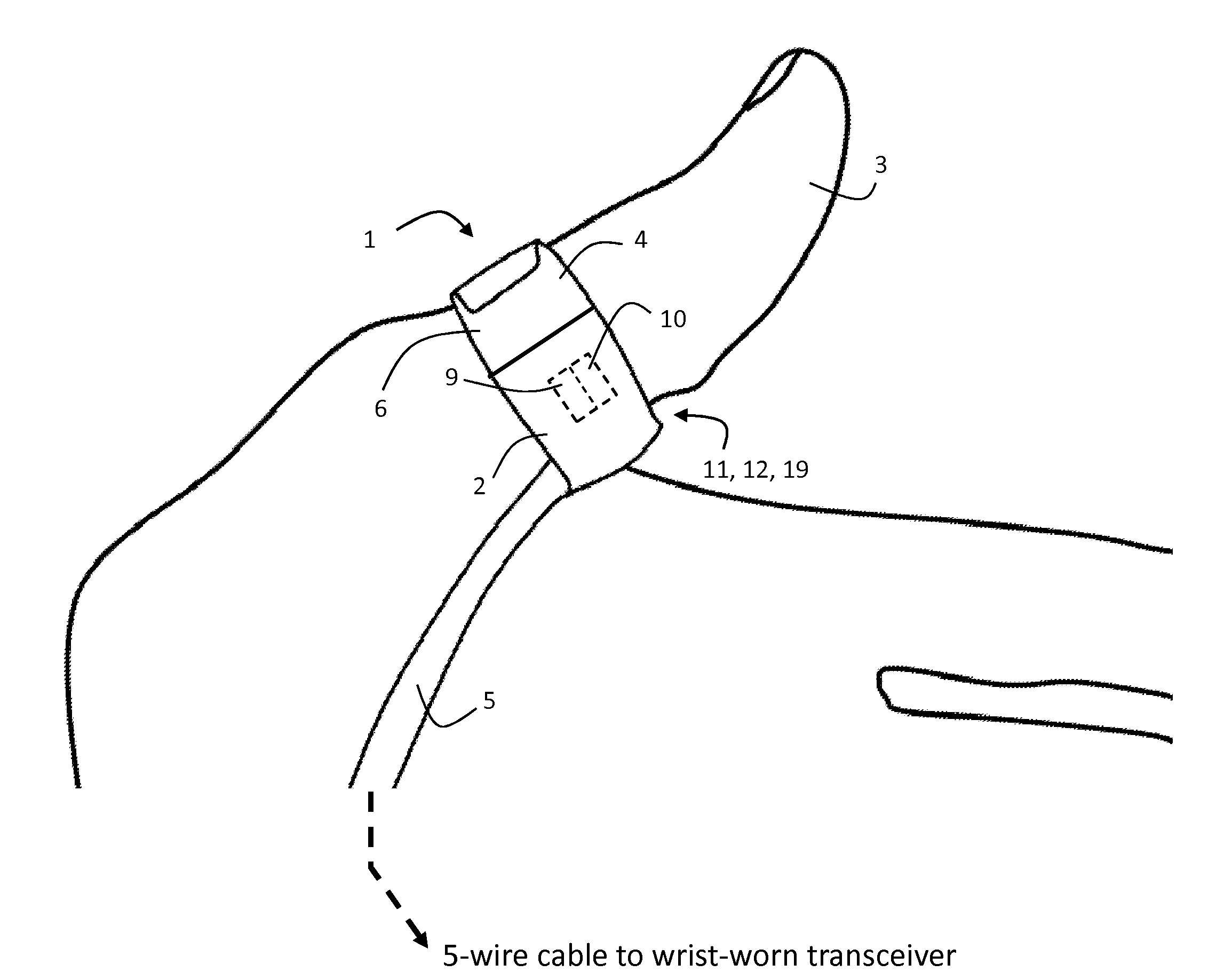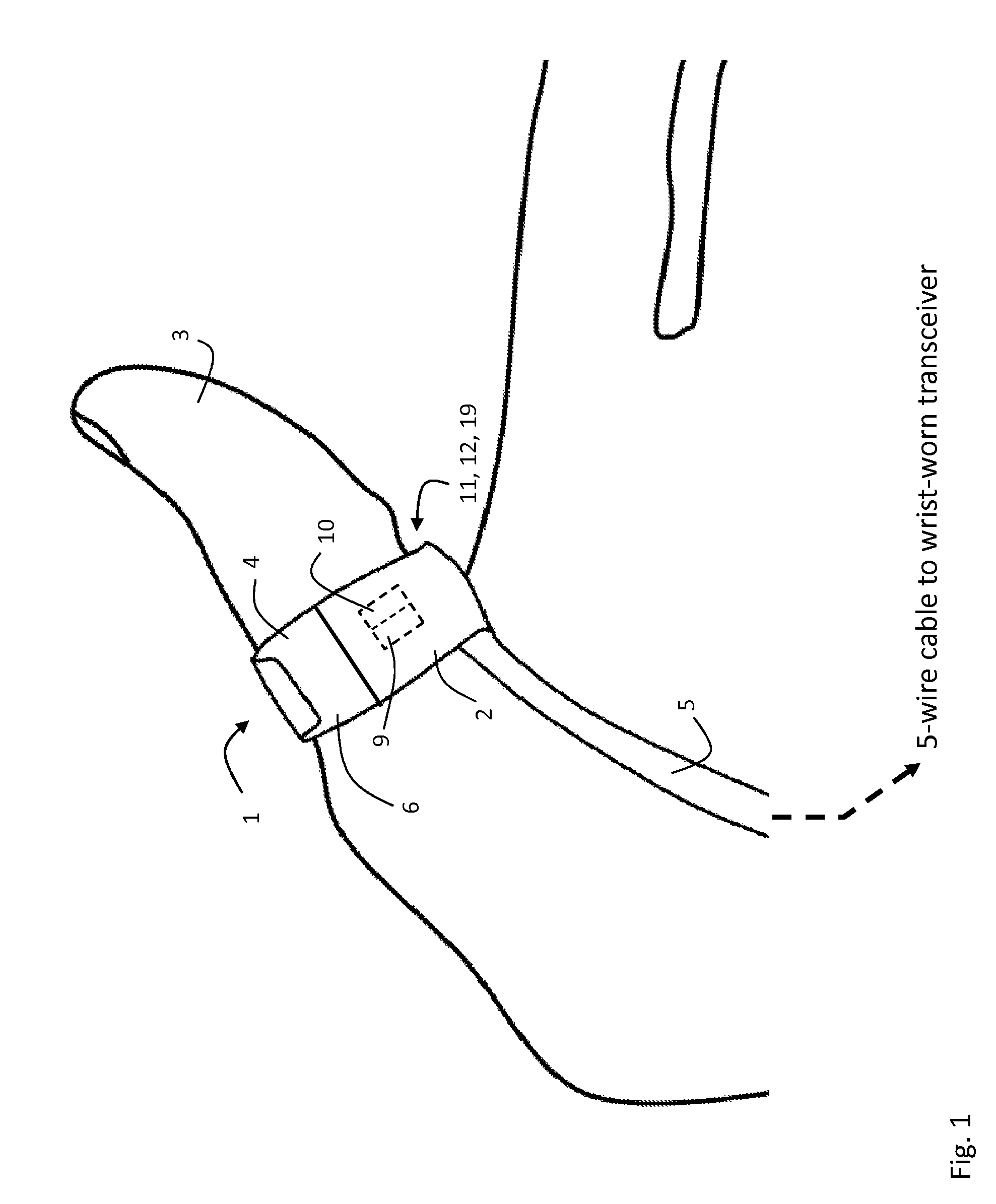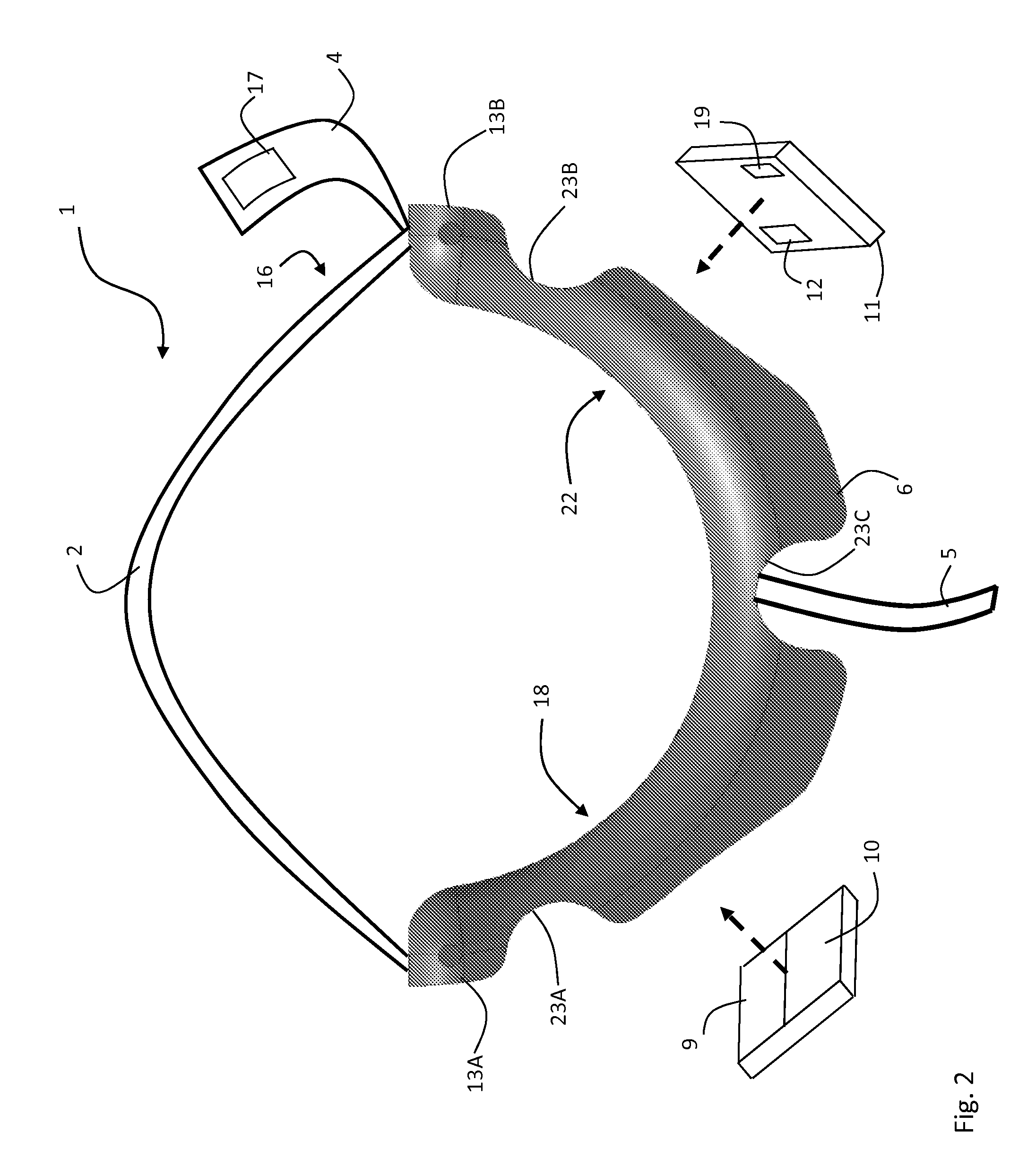Body-worn pulse oximeter
a pulse oximeter and body-worn technology, applied in the field of medical devices, can solve the problems of low probability of being hypoxic, disrupting the red/ir(ppg) waveform, and walking patients typically yielding noisy ppg waveforms, etc., to enhance the accuracy of cnibp measurement, improve signal-to-noise ratio, and accurately extract ac signals
- Summary
- Abstract
- Description
- Claims
- Application Information
AI Technical Summary
Benefits of technology
Problems solved by technology
Method used
Image
Examples
Embodiment Construction
[0060]FIGS. 1 and 2 show a pulse oximeter probe 1 shaped as a finger ring that wraps around a base of patient's thumb 3 to measure SpO2 and cNIBP. The probe 1 is designed to be comfortably worn for extended periods (e.g. several days) while freeing up the patient's thumb and hands for activities such as reading and eating that are commonplace in, e.g., a hospital. Motion corresponding to these and other activities can affect the SpO2 measurement and is detected with a network of accelerometers worn on the patient's body. The probe 1 makes a transmission-mode optical measurement along an inner portion of the thumb 3 with a pair of embedded LEDs 9, 10 operating at, respectively, 660 and 905 nm, and a single photodetector 12 that detects these wavelengths after they pass through vasculature and other tissue lying beneath the LEDs 9,10. Specifically, both LEDs 9, 10 and the photodetector 12 are positioned to measure blood pulsing in portions of the princeps pollicis artery, which is the...
PUM
 Login to View More
Login to View More Abstract
Description
Claims
Application Information
 Login to View More
Login to View More - R&D
- Intellectual Property
- Life Sciences
- Materials
- Tech Scout
- Unparalleled Data Quality
- Higher Quality Content
- 60% Fewer Hallucinations
Browse by: Latest US Patents, China's latest patents, Technical Efficacy Thesaurus, Application Domain, Technology Topic, Popular Technical Reports.
© 2025 PatSnap. All rights reserved.Legal|Privacy policy|Modern Slavery Act Transparency Statement|Sitemap|About US| Contact US: help@patsnap.com



